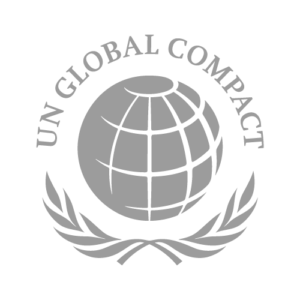Globale forhandlinger i Kenya: På sporet av en historisk plastavtale
Av Melica Jahangiri
English version below
Denne uken samlet regjeringsdelegasjoner seg i Nairobi, Kenya, for å utforme detaljer i det som kan bli verdens første globale traktat mot plastforurensning. Diskusjonene vil sentrere rundt om produksjonsbegrensninger skal fastsettes ensidig eller om stater skal velge sine egne mål. Dette er ansett som kjernen i traktatens ambisjoner.
Splittelser i forhandlingene
Under den siste forhandlingsrunden i Paris i mai, støttet land som USA, Saudi-Arabia, India og Kina en avtale etter «Paris-modellen», hvor stater selv bestemmer sine forpliktelser. I kontrast ønsket Afrika og mange utviklingsland sterke globale forpliktelser. Observatører har imidlertid notert en mulig endring i USAs holdning, selv om detaljene ennå ikke er klare.
«Nullutkastet»
Forrige måned offentliggjorde det internasjonale forhandlingsutvalget (INC) et «nullutkast» til teksten som skal danne grunnlaget for forhandlingene. Dette utkastet speiler ulike synspunkter fra forskjellige regjeringer og skisserer tre alternativer for å redusere primærplastproduksjonen:
- Et globalt fastsatt mål for reduksjon (lignende Montreal-protokollen).
- Globale mål for produksjonsreduksjon, med nasjonalt fastsatte begrensninger (lignende Paris-avtalen).
- Nasjonalt bestemte mål og restriksjoner.
Plastavfall og Miljøpåvirkning
Plastavfallet forventes og nesten tredoble seg innen 2060, med omtrent halvparten endende opp på søppelfyllinger og mindre enn en femtedel blir resirkulert. Dette bildet tegnes av en rapport fra Organisasjonen for økonomisk samarbeid og utvikling (OECD) fra 2022. Greenpeace oppfordrer til en reduksjon på minst 75% av plastproduksjonen innen 2040 for å holde drivhusgassutslippene innenfor et 1,5°C-scenario.
Forventninger og utfordringer
Forhandlingen i Kenya markerer et halvveis punkt i prosessen, med mål om en formell traktat innen utgangen av 2024. Mens det er håp om framgang, anerkjenner mange at geopolitikken rundt dette problemet er svært utfordrende. Store olje- og kjemiselskaper har så langt vist liten vilje til å endre kurs.
Med verdens øyne rettet mot Nairobi, står disse forhandlingene som et avgjørende øyeblikk i kampen mot plastforurensning og dens innvirkning på miljøet. Det gjenstår å se hvilken retning landene vil ta, og hvordan dette vil påvirke den globale responsen til plastkrisen.
Global negotiations in Kenya: On the track of a historic plastic agreement
By Melica Jahangiri
This week, government delegations gathered in Nairobi, Kenya, to draft details of what could become the world’s first global treaty against plastic pollution. The discussions will center around whether production limits should be set unilaterally or whether states should choose their own targets. This is considered the core of the treaty’s ambitions.
Divisions in the Negotiations
During the last round of negotiations in Paris in May, countries like the USA, Saudi Arabia, India, and China supported an agreement following the ‘Paris model’, where states determine their own commitments. In contrast, Africa and many developing countries desired strong global commitments. Observers have noted a potential shift in the USA’s stance, although the details are not yet clear.
The ‘Zero Draft’
Last month, the International Negotiating Committee (INC) published a ‘zero draft’ of the text that will form the basis of the negotiations. This draft reflects different viewpoints from various governments and outlines three options for reducing primary plastic production:
- A globally set target for reduction (similar to the Montreal Protocol).
- Global goals for production reduction, with nationally determined limits (similar to the Paris Agreement).
- Nationally determined goals and restrictions.
Plastic Waste and Environmental Impact
Plastic waste is expected to nearly triple by 2060, with about half ending up in landfills and less than a fifth being recycled. This picture is drawn from a report by the Organisation for Economic Co-operation and Development (OECD) from 2022. Greenpeace advocates for at least a 75% reduction in plastic production by 2040 to keep greenhouse gas emissions within a 1.5°C scenario.
Expectations and Challenges
The negotiation in Kenya marks a halfway point in the process, with the goal of a formal treaty by the end of 2024. While there is hope for progress, many recognize that the geopolitics around this issue are extremely challenging. Major oil and chemical companies have so far shown little willingness to change course.
With the world’s eyes on Nairobi, these negotiations stand as a crucial moment in the fight against plastic pollution and its impact on the environment. It remains to be seen which direction the countries will take, and how this will affect the global response to the plastic crisis.»




